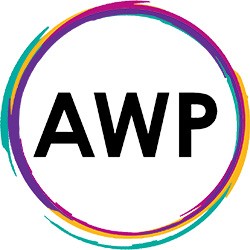|
Myo = refers to muscle fascia = the layers of connective tissue that surround the muscles
Myofascial pain syndrome is a chronic pain disorder. In this condition, pressure on sensitive points in your muscles (trigger points) causes pain in the muscle and sometimes in seemingly unrelated parts of your body. A trigger point in the back, for example, may produce referral pain in the neck. The neck, now acting as a satellite trigger point, may then cause pain in the head. The pain may be sharp and intense or a dull ache. Our muscles comprise a very large part of our bodies, and are a very potent source of pain. This pain can be a very effective mimic of many other pain contacts - a very large number of what are described as "trapped nerves" are in fact muscle pains. Sadly, this area of pain is not well understood by many health professionals.
We all get pain in our muscles from time to time, with "cricked necks", the symptoms of 'flu and so on. Muscle pain is also a component of the symptoms associated with many other painful contacts such as back pain and neck pain.
In some people muscle pain can become persistent and can cause considerable problems. In the past this was given names like Fibrositis, but now these pains are classed as Myofascial pain.
Muscle adhesions, (you might've heard them called knots), are places where the muscle has become chronically contracted. It can be an entire muscle, but more than likely it is a small band within the greater muscle. When you run your hand over the area, you can actually feel the muscle's contraction in the form of a lump. Things that cause adhesions are dehydration, over-use/over-stretching and injury.
Patients with Myofascial pain usually report regionalized aching and poorly localized pain in the muscles and joints. They also may report sensory disturbances, such as numbness in a characteristic distribution. Patients often report disturbed or unrefreshing sleep.
|
|
Self management techniques are extremely important. Sedentary individuals are more prone to develop active TrPs than are individuals who exercise vigorously on a daily basis.
There are a number of things that you can do which can help to reduce the symptoms of Myofascial pain:
· Exercise regularly. Aerobic fitness of the muscles is a very important factor in helping Myofascial pain. · Improve your posture. · Reduce your body weight. · Eat a healthy, well-balanced diet. · Learn stress-management techniques and relaxation techniques. · Use proper techniques at work, and during exercise and sports
Treatment for Myofascial pain syndrome typically includes:
· medications · trigger point injections (or acupuncture treatments directly to the muscles) · massage, physical therapy. Difference between Myofascial Pain and Fibromyalgia
Although Myofascial pain and Fibromyalgia have some overlapping features, they are separate entities; Fibromyalgia is a widespread chronic pain problem, not a regional condition caused by specific Trigger Points.
|





